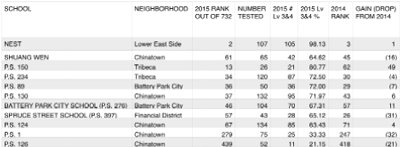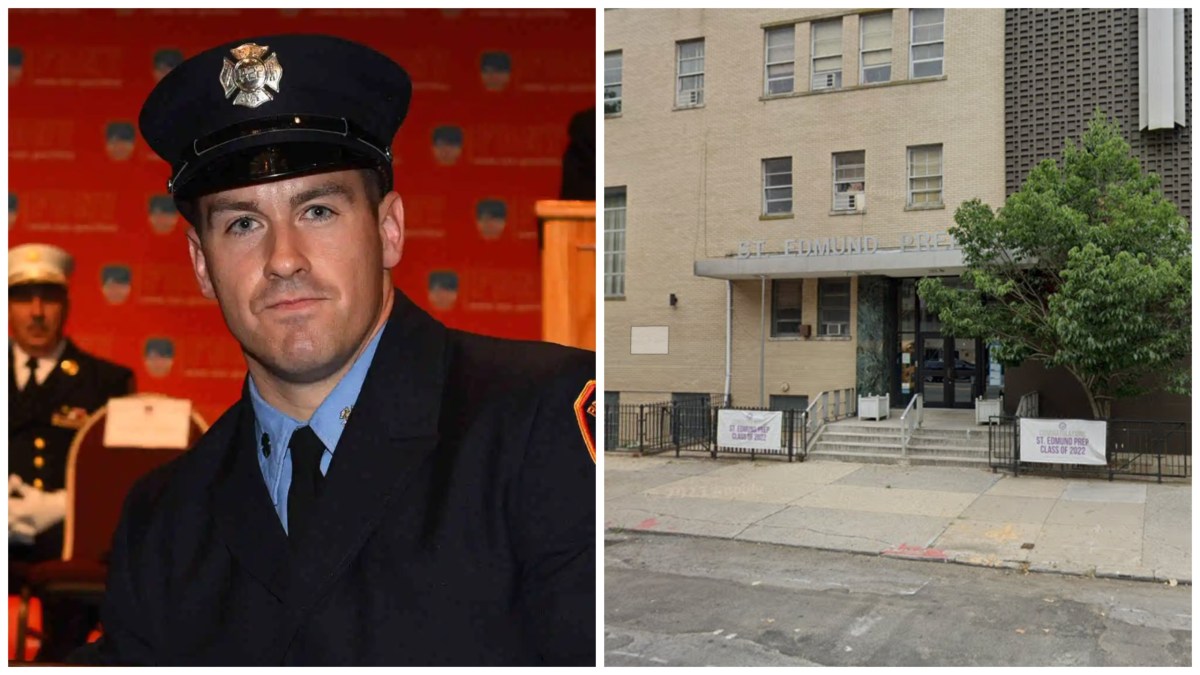
BY YANNIC RACK | If you’re the parent or guardian of a student who is starting middle school in New York City this week, there’s a good chance you spent some time last year worrying about your child’s reading score.
Competition for space in the city’s better public middle schools can be fierce, which is why Community Board 1 member Tom Goodkind has spent the last 14 years compiling an annual ranking of the reading scores in schools across the five boroughs.
A longtime Battery Park City resident, he said that it is important for parents to know how the local schools are doing on a key factor — the fourth grade English Language Arts or reading test, which is used by middle schools to pick and choose their next crop of students.
So, on what he calls the Annual Goodkind Ranking of NYC Public Elementary Schools, he ranks the percentage of fourth graders who score in the “passing” quadrants, 3 or 4.
Downtown schools usually do well, and this year was no exception. “Our kids do amazing on these tests,” Goodkind, whose two grown daughters attended public schools in Lower Manhattan, said. “P.S. 1 and P.S. 126 [in Chinatown] need some work, but the others are all in the top 10 percent of schools citywide. That’s amazing.”
The biggest gain this year was recorded at Tribeca’s P.S. 150, which jumped up 49 places to rank 13, out of the 732 schools tested. Continuing its march to the top was NEST (New Explorations into Science Technology and Math), taking the second spot citywide.
Goodkind noted that P.S. 276 and Spruce Street School both placed in the top 10 percent despite being new – the latter is only in the second year of taking the tests.
He also noted that his ranking has become especially useful in the last three years, as the test has been updated to reflect Common Core standards.
“You can see in the citywide rankings that, if you look at the actual scores, there is a huge drop between 2012 and 2013. Everybody got lower because the test got harder,” he said.
So instead of just listing the test scores, which are still much lower overall than three years ago, the ranking focuses on the schools’ performances compared to each other.
But the scores don’t reflect the entire student body at a given school anyway, with more and more students opting out of the test.
This year, a whopping 20 percent of students in New York State didn’t take the state-mandated Common Core standardized tests in math and English Language Arts, far more than the previous year, but that trend didn’t hold Downtown.
In District 2, which includes Lower Manhattan, only 233 students did not take the test for grades 3-8.
For someone who spends roughly a day every year compiling the ranking, Goodkind is actually no fan of the test.
“I hate this test, I wish it would go away,” he said, adding that he would like to see zoned local middle schools instead.
“New York right now, for public school students, because of the way it’s structured, is clearly punishing. We appear to be the only city that tests children as young as eight to determine much of that child’s academic future. And as for middle school choice, why should anyone in the five boroughs be forced to go out of their familiar area and be a complete stranger in a new place?”

















